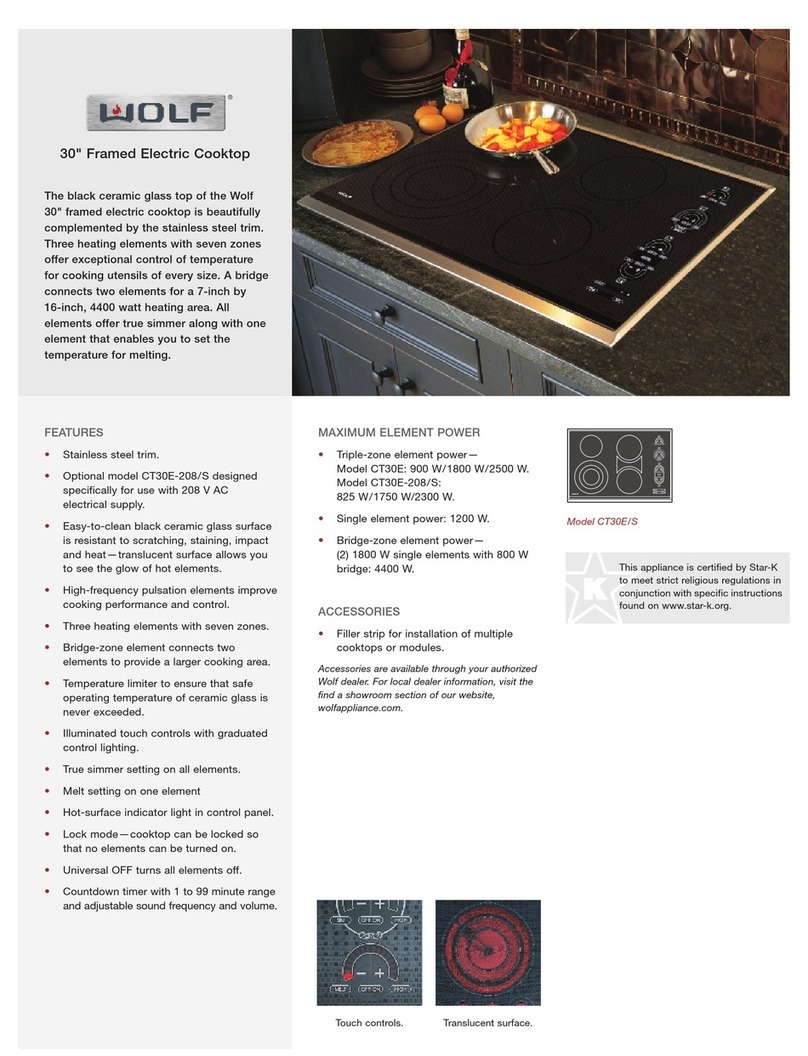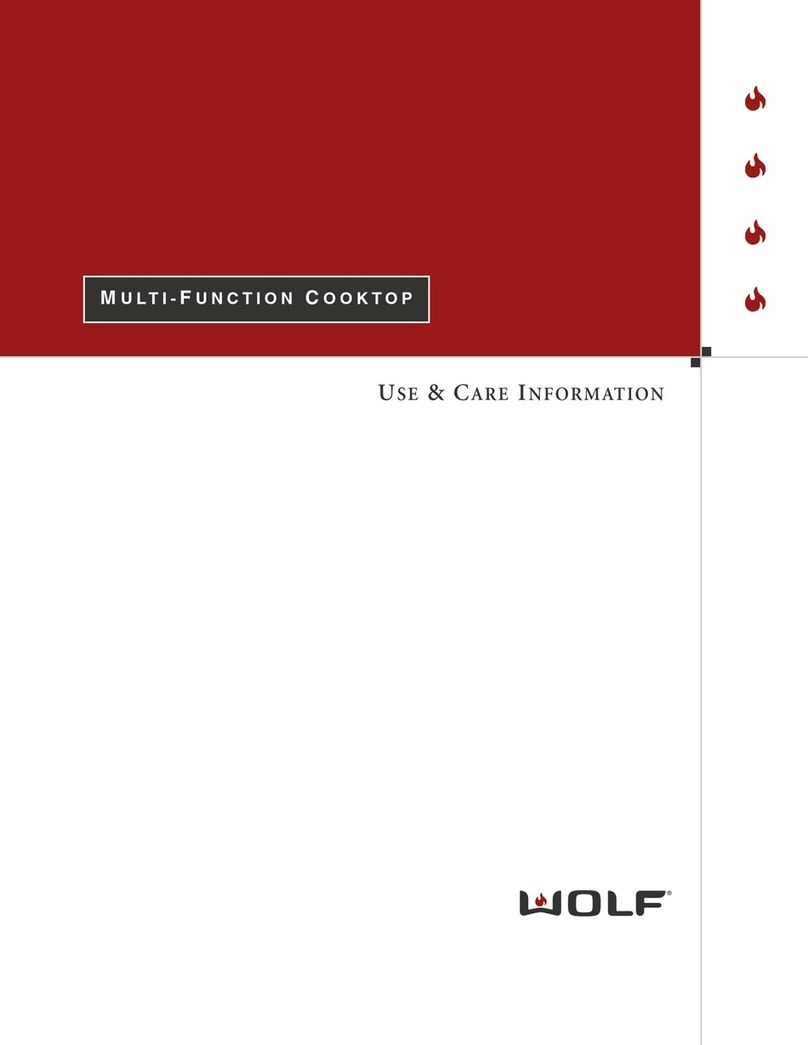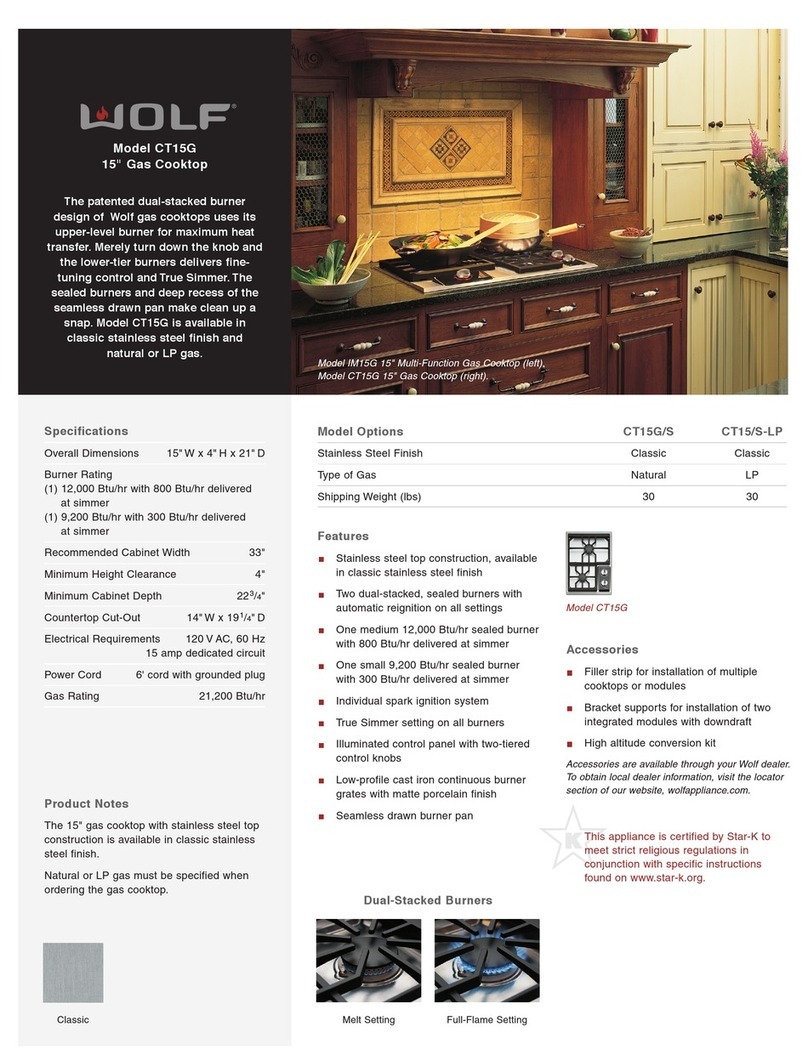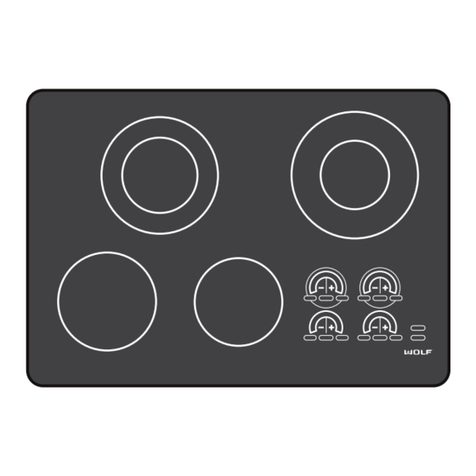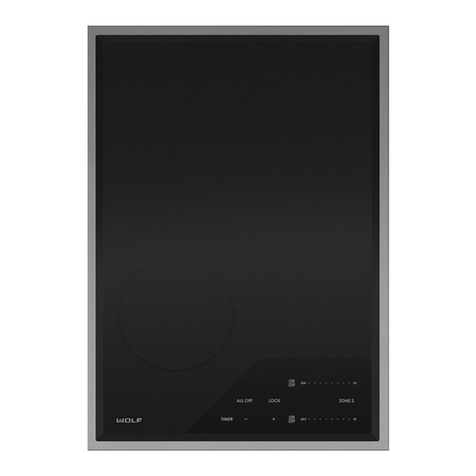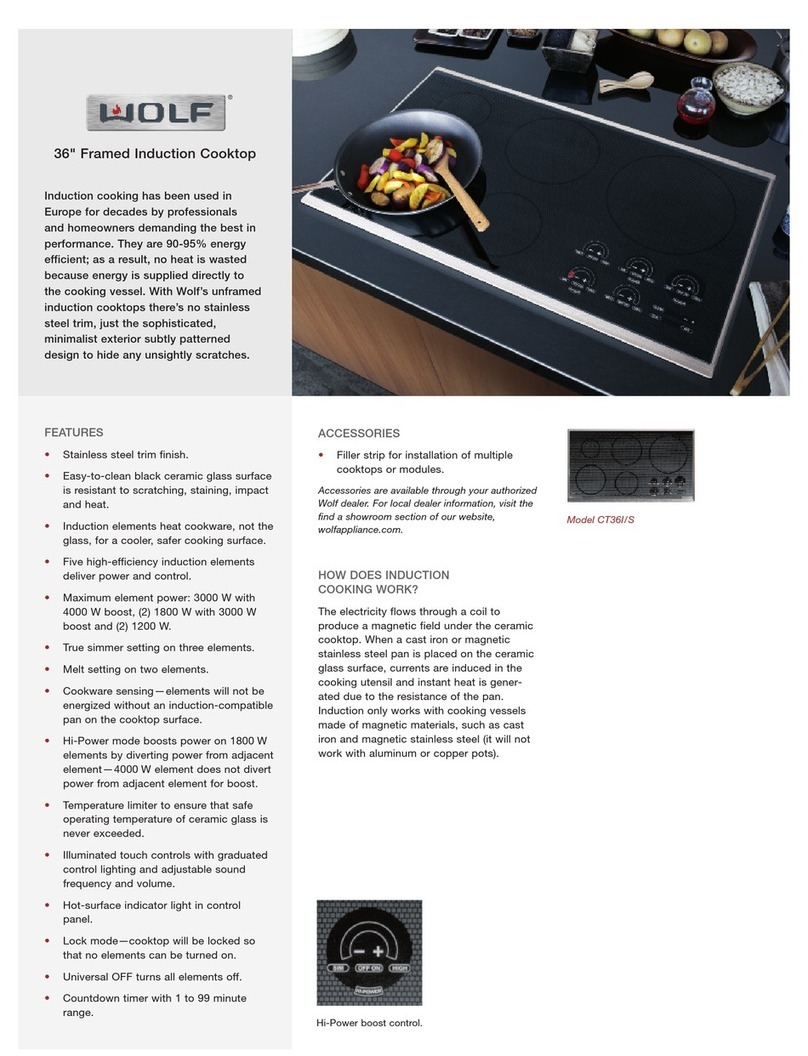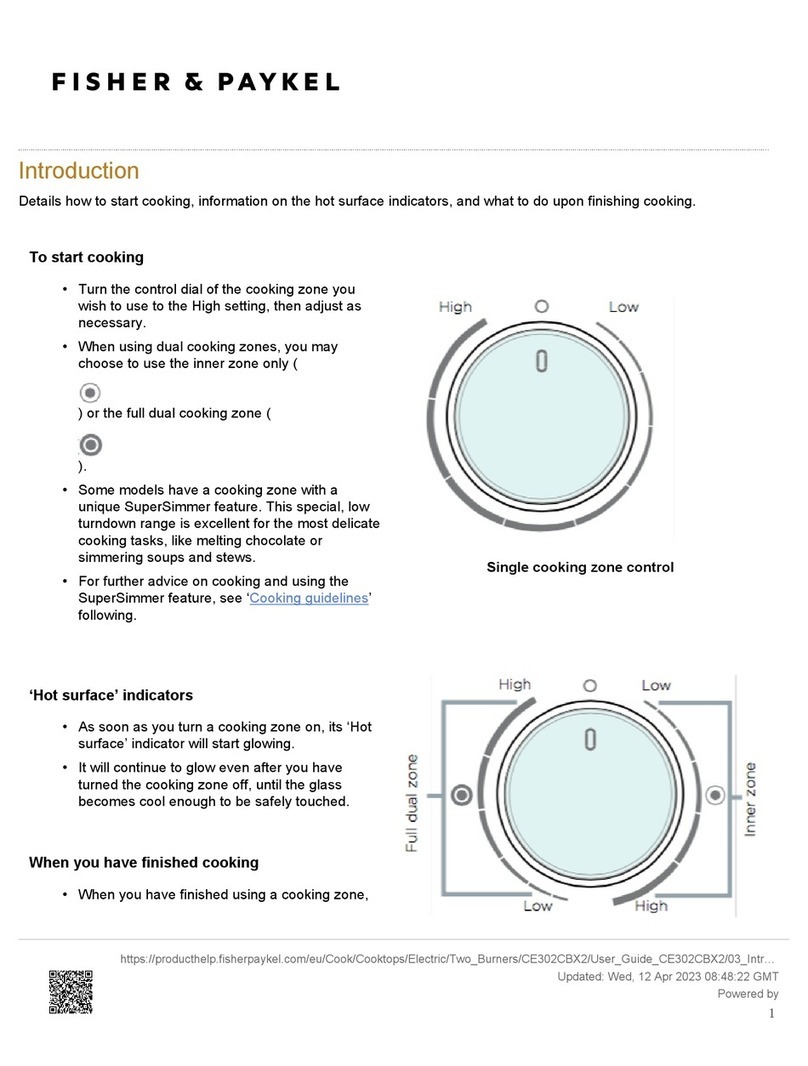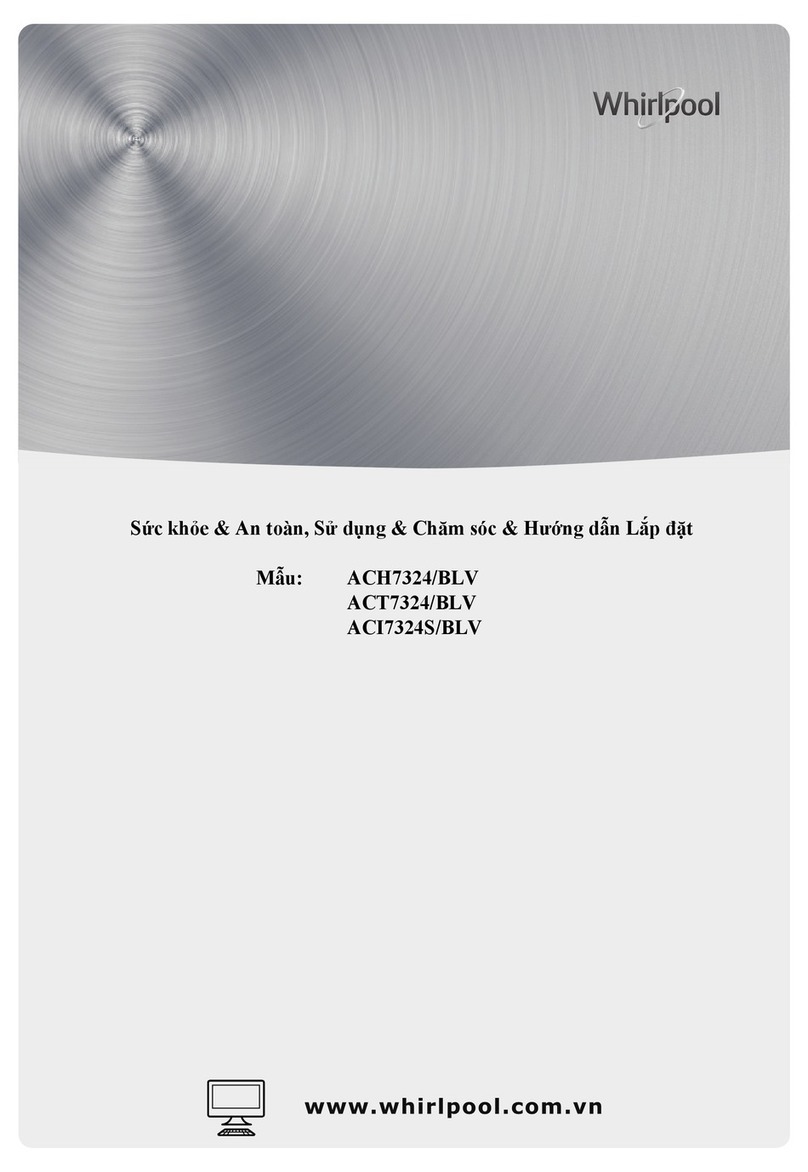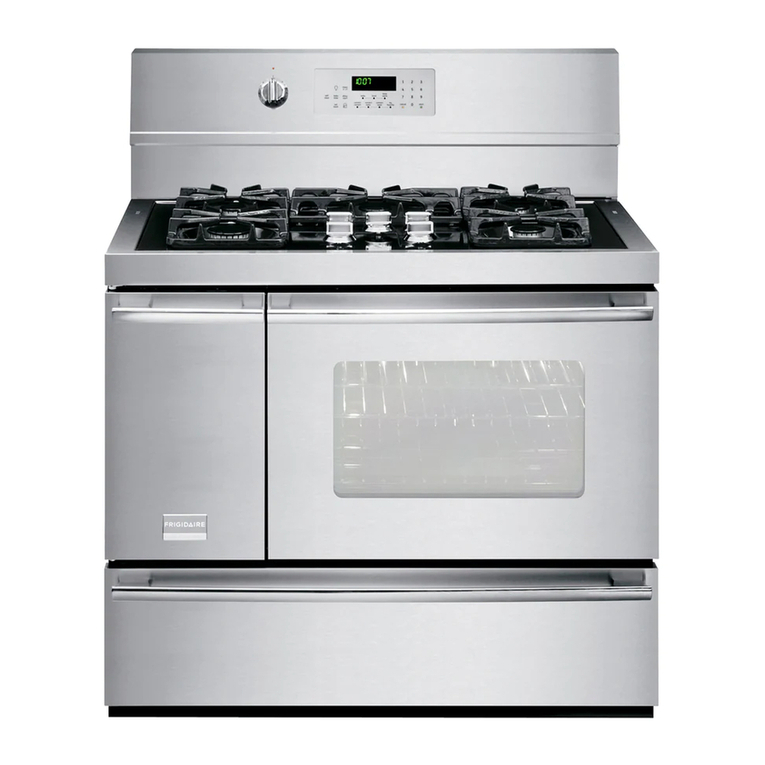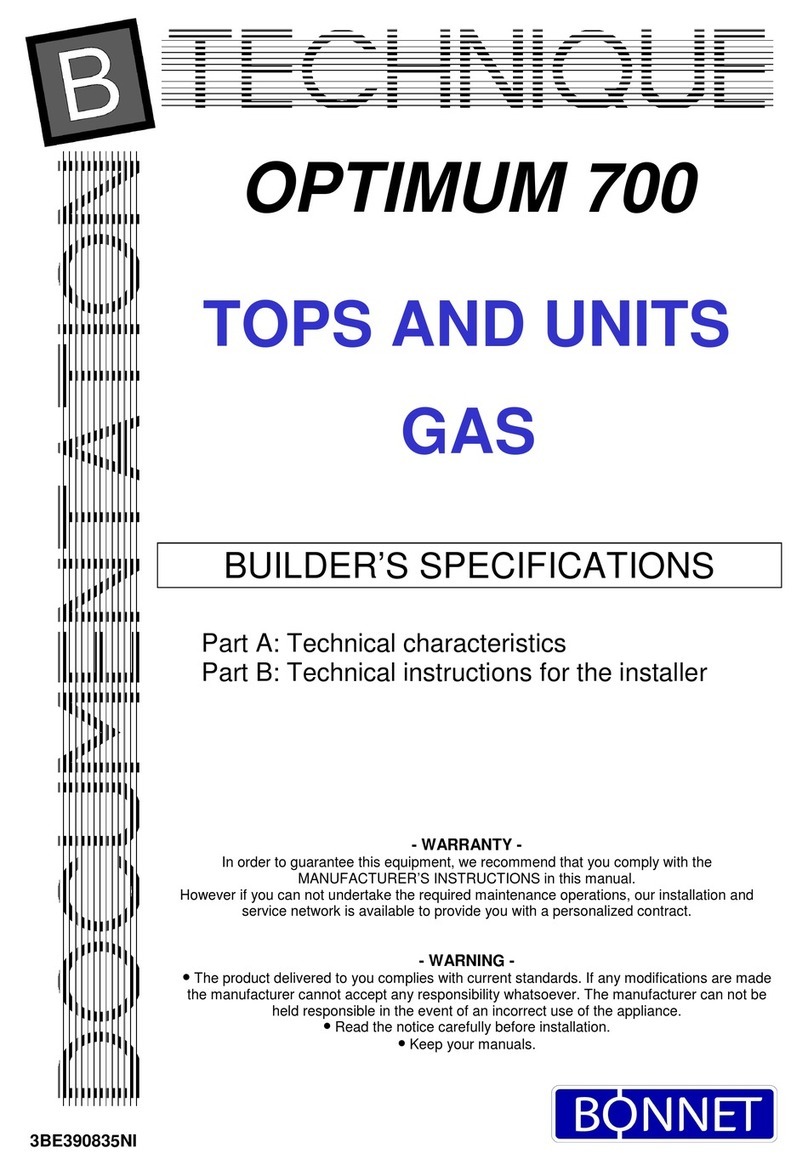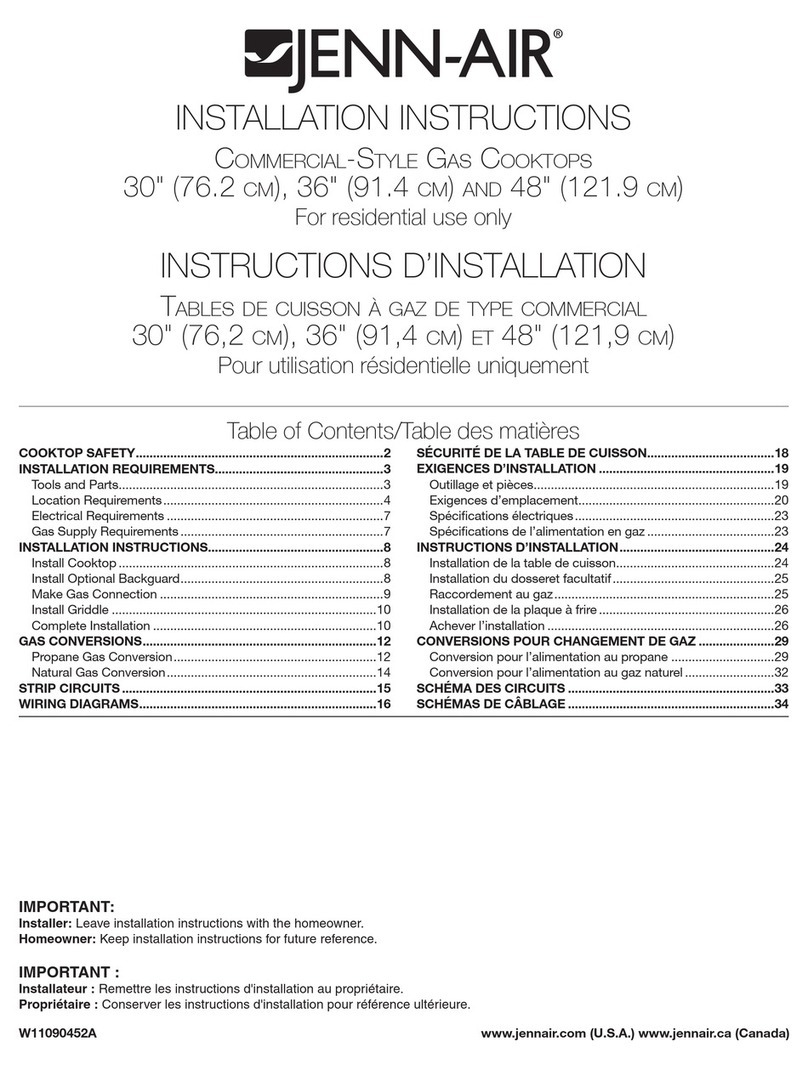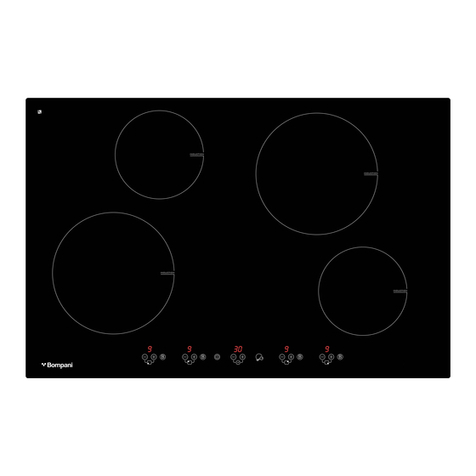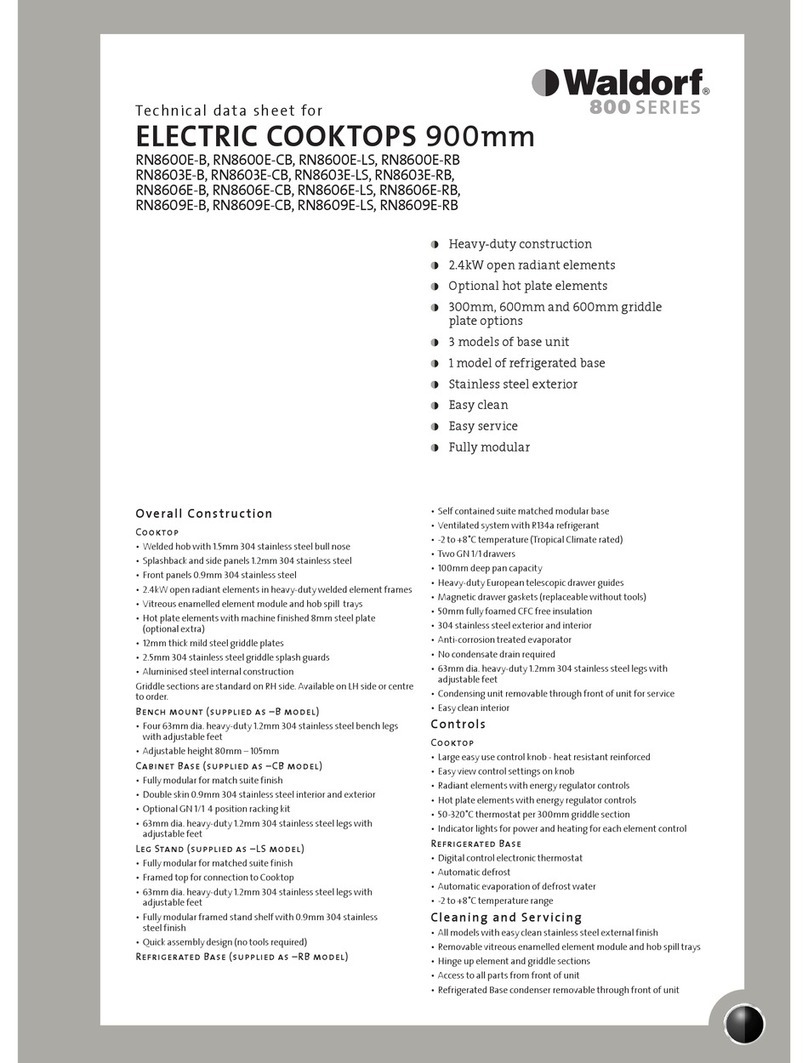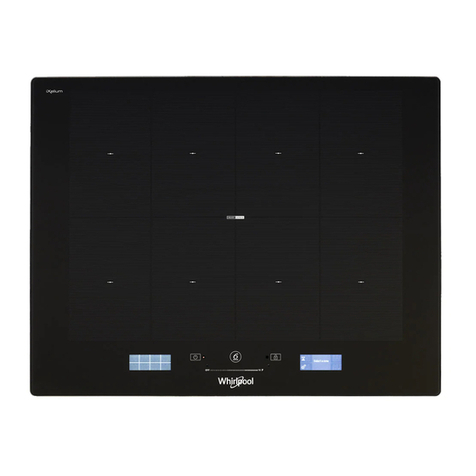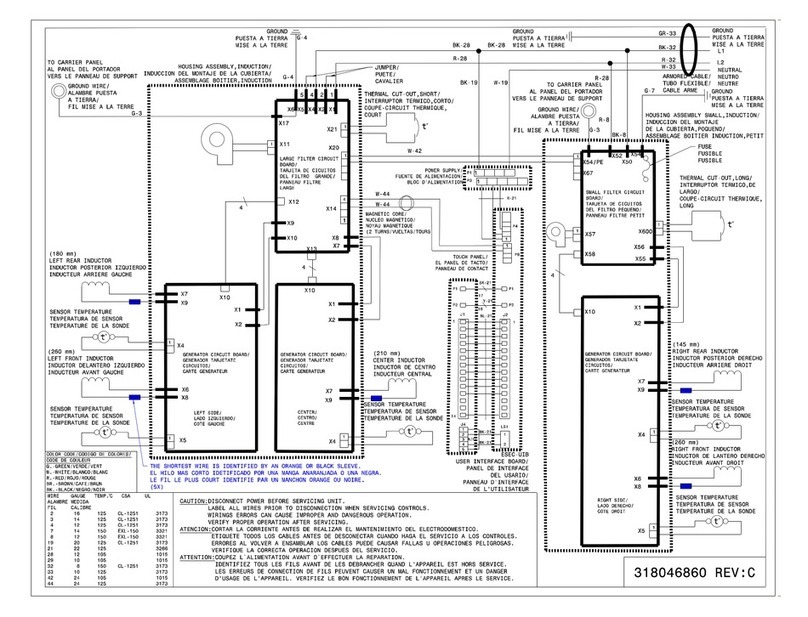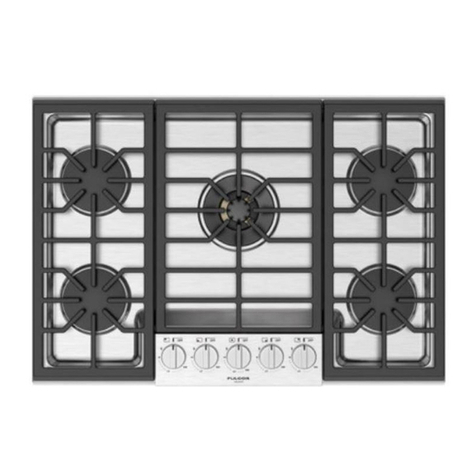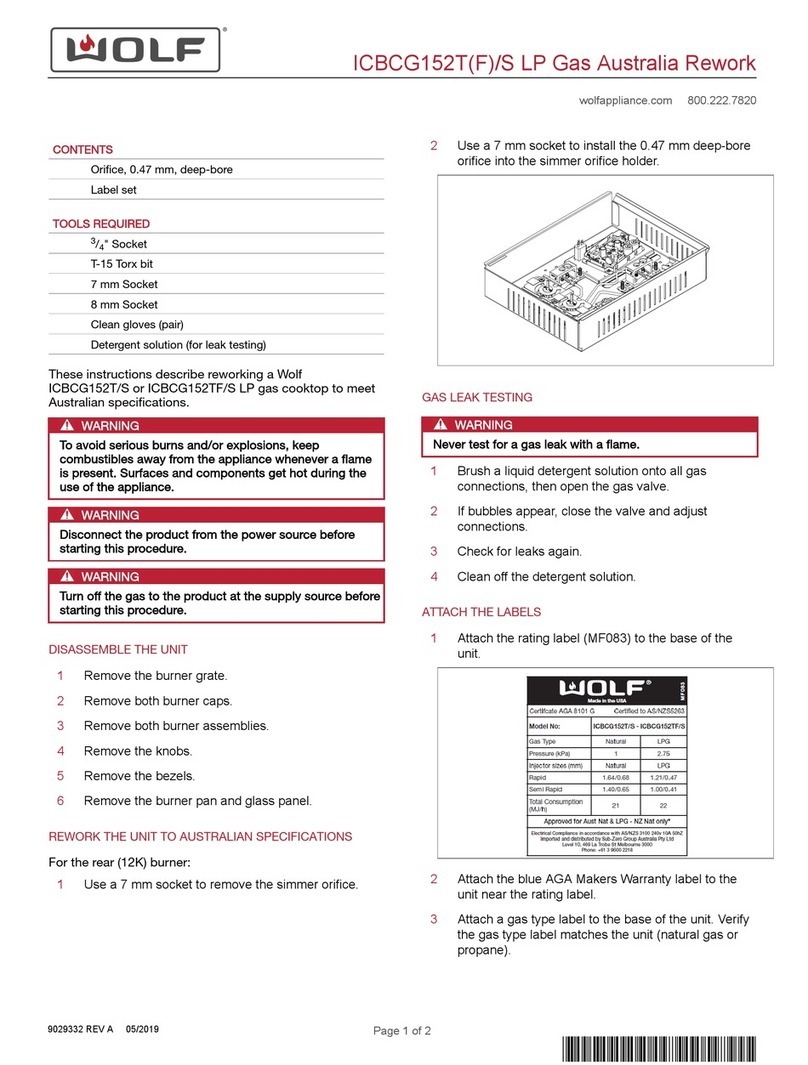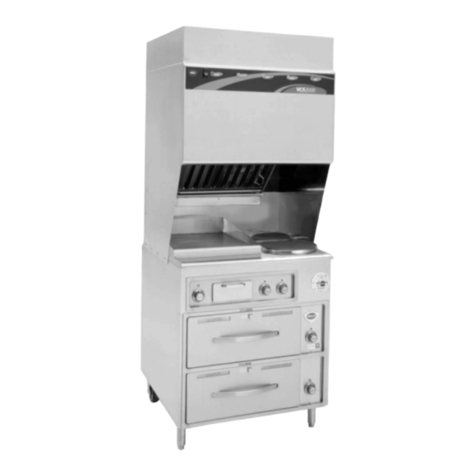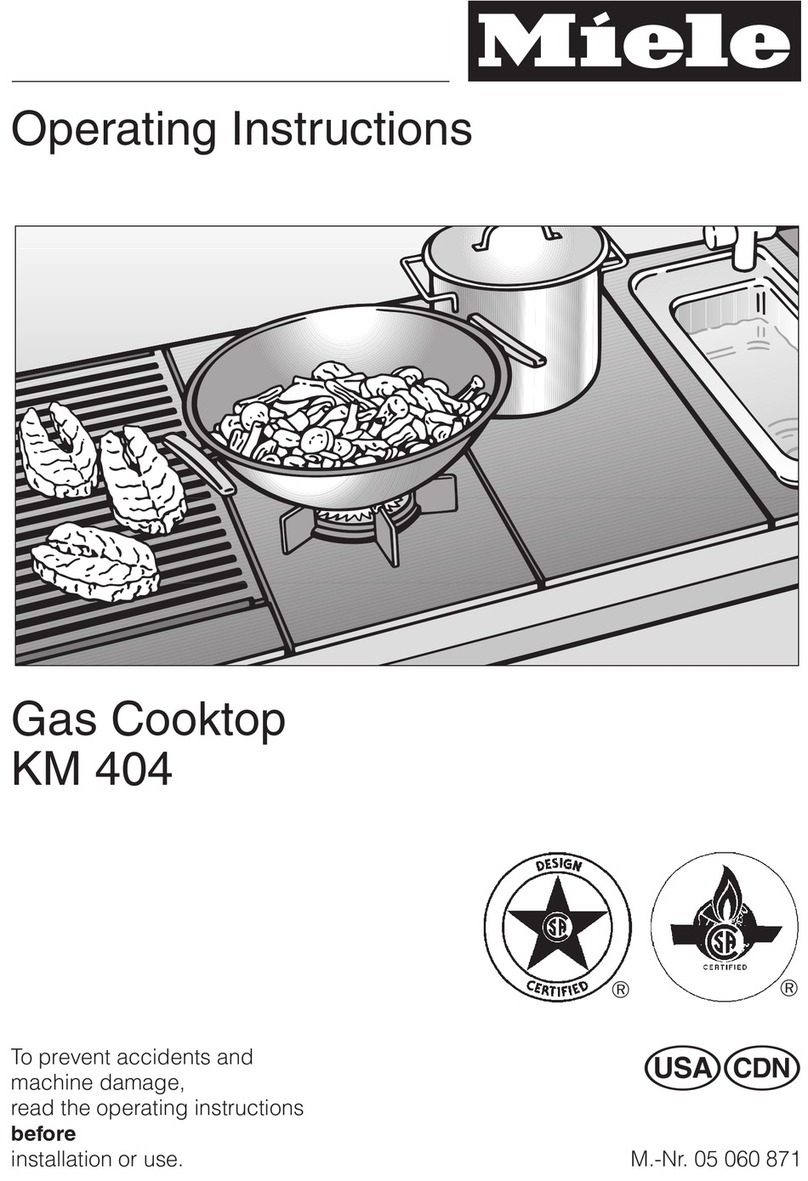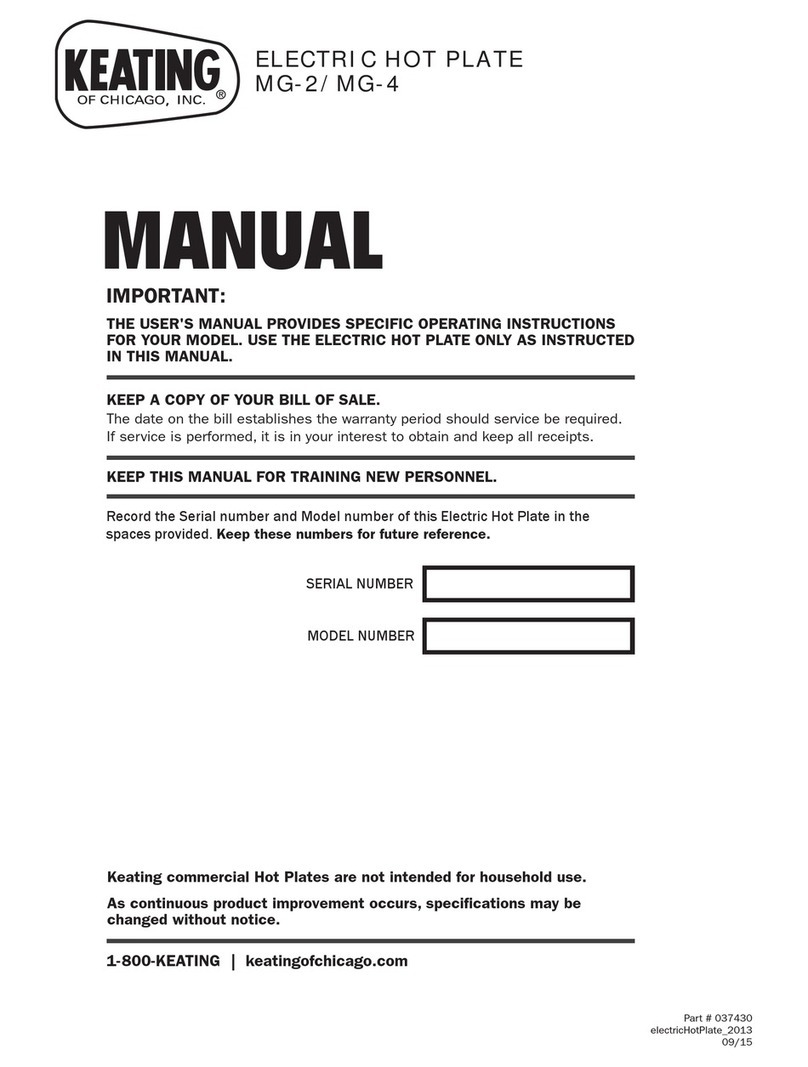
Ventilation Made Easy 8
Ventilation Made Easy
After choosing your ventilation hood or downdraft, follow
this three-step process to determine your blower needs:
Step 1) Determine the Duct Run
Step 2) Determine the CFM
Step 3) Select a Blower Assembly
Step 1: Determine the Duct Run
Check local codes. Consult a qualified HVAC professional
to ensure that all local codes are followed. Always refer to
installation instructions for your specific Wolf ventilation
product.
Minimize the duct run and number of elbows and transi-
tions. The length of the duct run and number of elbows
and transitions can have a significant effect on ventilation
performance. Keep the duct run as short as possible and
limit the number of elbows and transitions.
Do not place elbows and transitions back-to-back.
Whenever possible, include a minimum 15" (381) straight
ducting between elbows and transitions. Elbows and
transitions placed too close to each other will cause a
decrease in ventilation performance.
Use recommended duct sizes. Depending on the specific
ventilation product, Wolf recommends 8" (203) or 10" (254)
ducting. Smaller duct sizes will significantly reduce
ventilation performance. Refer to individual specifications
for each ventilation product on pages 14–41.
Do not use flexible metal ducting. Flexible metal ducting
will increase air resistance and is not recommended by the
National Uniform Mechanical Code Standards.
Do not use butt joints. Whenever possible, use male and
female connections with the male end pointing in the
direction of the airflow. Tightly tape joints to maximize
ventilation performance.
Cold weather installations. Cold weather installations
may require an additional backdraft damper to minimize
backward flow of cold air. It should be placed as close to
the roof or wall cap as possible. All Wolf ventilation hoods,
except low-profile wall hoods, come with a backdraft
damper connected to the transition. Downdraft systems
do not have a backdraft damper.
High altitudes. Ventilation systems are less effective at
altitudes above 5,000' (1524 m). At these altitudes, you
should estimate a 20%–25% reduction in CFM perform-
ance. Solutions include using a higher CFM blower and
increasing the duct size.
Make-up air may be required. Most newer homes have
tightly sealed doors and windows. Make-up air may be
needed to replace the air removed by the ventilation
system. Many heating and air conditioning systems
provide make-up air. Opening a window or door can be
an option but may be less effective. Consult a qualified
HVAC professional for specific applications.
Recirculating ventilation. Recirculating units recycle the
air through a charcoal filter and return it to the kitchen.
This type of ventilation will not remove heat, moisture or
combustion gases from the air. It will also be less effective
in reducing odors and smoke. Recirculating units should
only be used in applications where ductwork to the
outside is not an option, and only if local codes allow it.
Refer to specifications for recirculating ventilation on
pages 42–43.

